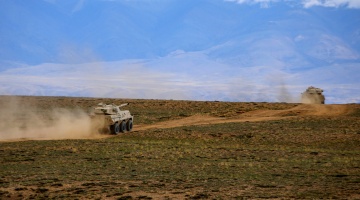Recently, the G7 defense ministers issued a joint statement underscoring their intent to continue to provide assistance to Ukraine and their support for Ukraine on its irreversible path to full Euro-Atlantic integration, including NATO membership, following their meeting in Naples, Italy. The new NATO Secretary General Mark Rutte, High Representative of the EU for Foreign Affairs and Security Policy Josep Borrell, and others also attended the meeting. This inevitably brings to mind the previously disclosed large-scale NATO expansion plan by German media, which has once again heightened concerns about the deterioration of the European security framework and the escalation of tensions.
According to the plan disclosed, NATO plans to expand by adding 49 more combat-ready brigades and bringing the total number to 131. It is also planned to increase the number of combat corps from 6 to 15 and the number of division headquarters from 24 to 38. Meanwhile, NATO also plans to enhance its capabilities in areas such as air defense, munitions, and long-range precision weapons, including increasing the number of ground air defense units from 293 to 1,467.
The expansion of military forces is actually an important part of NATO's recent efforts to strengthen deterrence and defense against Russia. Following the outbreak of the Ukraine crisis in 2022, NATO approved the NATO 2022 Strategic Concept and the "most comprehensive defense plans since the end of the Cold War", re-establishing Russia as its "most significant and direct threat." This has led to a series of deployments aimed at increasing military spending, acquiring military equipment, and strengthening forward defense, while also providing a roadmap for enhancing NATO's defense industrial base.
There are three main reasons for NATO's active military expansion and preparation for war.
Firstly, NATO's security anxieties are increasing day by day. The Ukraine crisis has now lasted for over two years, yet the outcome remains uncertain. At the same time, the confrontation between NATO and Russia is becoming increasingly entrenched, making it seemingly more difficult to establish a durable and mutually acceptable European security framework. More importantly, the current anxiety over "homeland defense" in Europe is deepening and the EU's fear of a "Russian attack" is steadily increasing.
Secondly, NATO's military capabilities are charged but lack a safety net. European defense investments have long been in a state of underfunding. Although NATO set a guideline of "defense spending at 2% of GDP" after the Crimea crisis, only six NATO member countries met this target by 2021. Moreover, European countries have a wide variety of outdated weapon systems with poor interoperability. Therefore, the former Dutch Prime Minister Mark Rutte, who took over as NATO Secretary General on October 1, clearly designated defense construction as a priority task during his term.
Thirdly, the US is the primary driving force behind NATO's active military expansion and reinforcement of deterrence against Russia. Although there are no significant internal disagreements in the US regarding encouraging Europe to take on greater security responsibilities, in light of the upcoming elections, which present the "greatest uncertainty" across the Atlantic, the US government is motivated to accelerate substantive progress in transatlantic security cooperation. This serves as a political achievement and allows Washington to free up more resources for its so-called "Indo-Pacific Strategy."
According to estimates from Ukrainian media, the plan is expected to add 245,000 soldiers, "equivalent to four times the size of the German Army" or "twice the size of the French Army." To arm these forces, NATO will require 1,200 tanks, 2,700 infantry fighting vehicles, 3,000 armored personnel carriers, and 900 large-caliber artillery pieces.
It is foreseeable that if the plan is successfully implemented, it will significantly strengthen NATO's military capabilities and partially alter the balance of military power in the European continent. A NATO that is more assertive and aggressive will not only significantly increase Russia's sense of insecurity but also greatly elevate the risk of escalation or even loss of control in conflicts, which would be detrimental to the efforts to de-escalate and resolve the Ukraine crisis.
Meanwhile, Europe, bound within the NATO framework, will be forced to move further down the path of "resisting Russia." In the near future, security investments by European countries will continue to squeeze their economic, technological development, and social resources, while US defense contractors may continue to rake in profits.
Anyway, the implementation of NATO's military expansion plan remains to be seen. The document acknowledges that the funding required for the expansion plan may "far exceed 2% of GDP.” According to the analysis of US media, considering the economic crises in much of Europe and the unsustainable accumulation of debt in the US, it remains uncertain whether NATO countries can bear such an increase.
(The author is head of the European Security Project, China Institutes of Contemporary International Relations)
Editor's note: Originally published on huanqiu.com, this article is translated from Chinese into English and edited by the China Military Online. The information and opinions in this article do not necessarily reflect the views of jmhuiquan.com.









